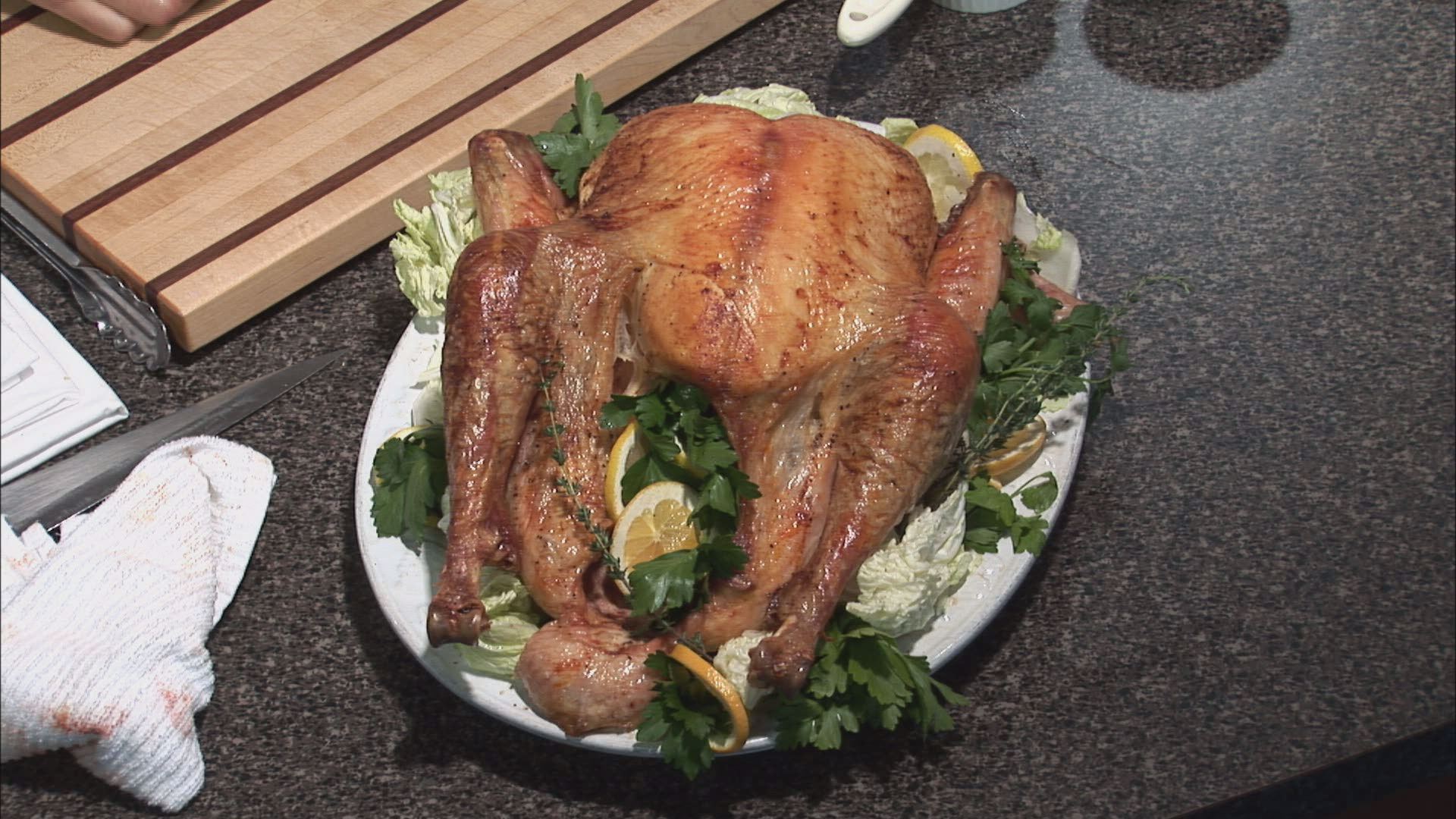says now more than any other time of year, people approach him for culinary advice. And they all are asking about what to do with turkey.
Here are his tips.
1. How to choose your turkey:
Fresh vs Frozen: A fresh bird will always be juicier than a frozen bird. Fresh birds cost more and it is very difficult to find a frozen bird that has not been injected with liquid of some kind. A fresh bird is always preferable but a frozen bird that is not injected will do very well.
2. Natural vs Pre Basted
Pre basted birds are juicy. Think " Butterball" or a generic equivalent. BUT, and it's a big but, the liquid used to baste these birds is almost never natural. Lots of food additives and sodium go into these.
If the bird has an ingredient list on the label, it has food additives. Only natural birds do not legally require food labels.
3. My personal go to favorite: Empire Kosher turkey.
Frozen - All natural. Usually available at Trader Joes
4. What size
If you want to have some left overs - 1 1/4 # per adult + 1/2 # per child
Reduce weight by 25% if you want to eat it all on Thanksgiving
5. How much stuffing to make
1 cup per pound of turkey
6. How to thaw
In the refrigerator in the original package: 1 day for every 4 pounds of turkey
In cold water in the original package: ½ Hour for every pound of turkey- change water every hour
7. To brine or not to brine
You should only brine a bird that is NOT pre basted.
Basic Brine adds moisture not flavor. But there are many brine recipes which also add flavor.
Basic Brine recipe is ½ C Sea or Kosher salt per gallon of water
Brine your turkey for 45-60 minutes per pound of turkey
Brine your bird in the refrigerator in a food safe plastic bowl, bucket or bag, stainless steel or glass. DO NOT USE A PLASTIC GARBAGE BAG – THEY ARE MADE OF PETROLEUM
Brine procedure:
Wash turkey - Fully cover turkey and brine for recommended time - Wash and pat dry after
8. To stuff or not to stuff
No doubt that cooking a turkey with the stuffing inside makes the stuffing rich with the juices from cooking. That said, stuffing a turkey is dangerous and requires extra care to avoid food borne illness.
Stuffing the turkey absorbs a lot of the cooking juices and makes it more difficult to make pan gravy.
A stuffed turkey takes longer to cook and always yields a dryer bird.
It is preferable to cook the stuffing outside the bird and drizzle some pan drippings over the stuffing before serving. Externally cooked stuffing still needs to cook to an internal temperature of 165.
9. Stuffed turkey tips:
Do not stuff the turkey the day before. Stuff the turkey with hot stuffing and cook it right away. Make double sure that your bird and stuffing reach165 degrees before serving, take the internal temperature in several places and be sure that you calibrate your thermometer before using it.
10. Cooking method:
Place oiled and seasoned turkey on an oiled rack in a shallow roasting pan. Place some rough chopped celery, carrot and onion with some fresh thyme and bay leaf in the pan with some water or poultry stock. Tent top of turkey with foil for the first 90 minutes. Remove tent until turkey browns to the desired color, then tent until fully cooked.
Rest cooked turkey 20 – 30 minutes before carving.
11. Approximate Cooking time at 325 degrees
Unstuffed
8 to 12 pounds 2¾ to 3 hours
12 to 14 pounds 3 to 3¾ hours
14 to 18 pounds 3¾ to 4¼ hours
18 to 20 pounds 4¼ to 4½ hours
20 to 24 pounds 4½ to 5 hours
Add 15 – 30 minutes for a stuffed bird – Use thermometer
12. When is the turkey done
A meat thermometer is absolutely necessary to determine when the bird is cooked. It is necessary to calibrate any non-digital thermometer.
A cooked turkey has an internal temperature of 165 degrees. Many sources say higher temperatures for the thigh but this is not necessary. Cooking to a higher temperature will yield a dry bird.
13. Best source for cooking and temperature information
The USDA


